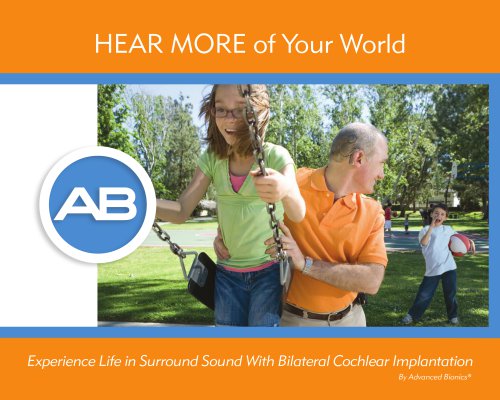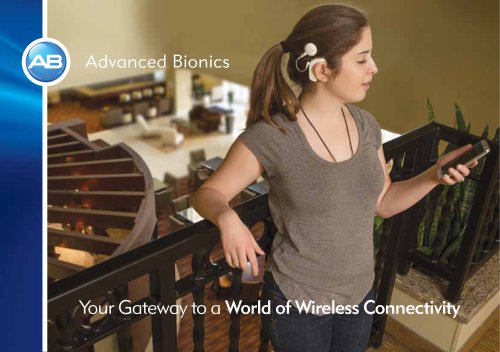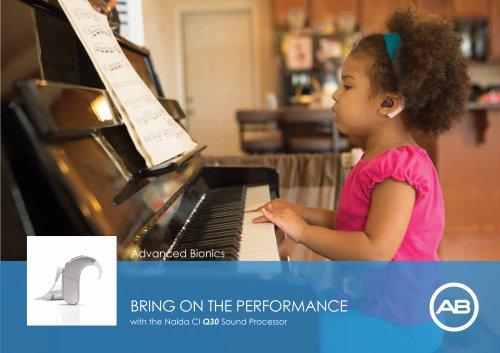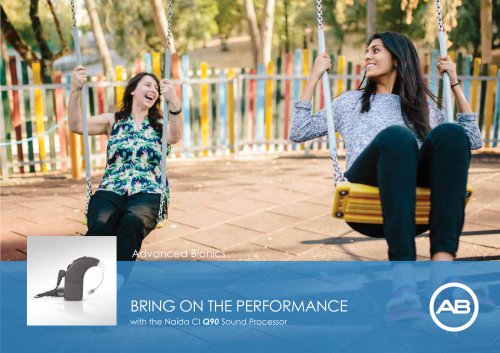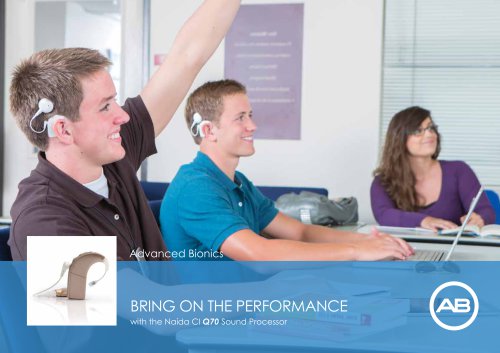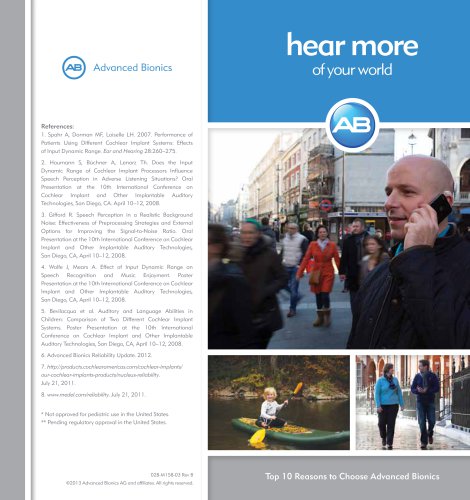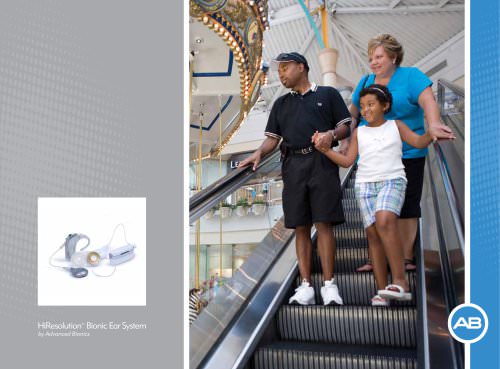
Catalog excerpts
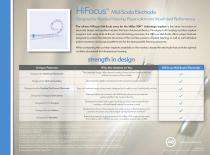
HiFocus™ Mid-Scala Electrode Designed for Residual Hearing Preservation and Maximised Performance The all-new HiFocus Mid-Scala array for the HiRes 90K™ Advantage implant is the latest innovation in electrode design and another industry rst from Advanced Bionics. Developed with leading cochlear implant surgeons and using state-of-the-art manufacturing processes, the HiFocus Mid-Scala offers unique features designed to protect the delicate structures of the cochlea, preserve residual hearing, as well as suit individual patient anatomy and surgical preferences for the best possible hearing outcomes. When comparing the cochlear implants available on the market, choose the electrode that provides optimal cochlear placement for full-spectrum hearing. strength in design Unique Features HiFocus Mid-Scala Electrode Designed for Mid-Scala Placement The patented design offers lowest insertion forces and no contact with the delicate structures of the cochlea Designed for Optimal Insertion Ideal insertion depth and placement for maximum performance1-3 Designed as the Smallest Pre-Curved Electrode Easy and optimal surgical placement, designed to t safely in each individual’s cochlea Designed for Focused Stimulation Patented electrode contacts with Mid-Scala placement provide the perfect platform for current steering Developed for latest soft surgery techniques, including round window insertion, with dedicated tooling for precise control Studies have shown that patients may retain some of their hearing when cochlea structures are undamaged during electrode insertion4,5 Robust mechanical improvements of the HiRes 90K implant that leads the industry with a 99.8% one-year cumulative survival rate (CSR)6 1. Frijns JHM, Kalkman RK, Vanpoucke FJ, Bongers JS, Briaire JJ. Simultaneous and non-simultaneous dual electrode stimulation in cochlear implants: evidence for two neural response modalities. Acta Otolaryngol. 2009 Apr;129(4):433-9. 2. Stakhovskaya O, Sridhar D, Bonham BH, et al. Frequency map for the human cochlear spiral ganglion: Implications for cochlear implants. J Assoc Res Otolaryngol. 2007 8: 220-233. 3. Holden LK, Finley CC, Firszt JB, Holden TA, Brenner C, Potts LG, Gotter BD, Vanderhoof SS, Mispagel K, Heyebrand G, Skinner MW. Factors affecting open-set word recognition in adults with cochlear implants. Ear and Hearing. 2013 Jan 23; Epub. 4. Carlson ML, Driscoll CL, Gifford RH, Service GJ,Tombers NM, Hughes-Borst BJ, Neff BA, Beatty CW. Implications of minimizing trauma during conventional cochlear implantation. Otol Neurotol. 2011 Aug;32(6):962-8. 5. Fraysse B, Macías AR, Sterkers O, Burdo S, Ramsden R, Deguine O, Klenzner T, Lenarz T, Rodriguez MM, Von Wallenberg E, James C. Residual hearing conservation and electroacoustic stimulation with the nucleus 24 contour advance cochlear implant. Otol Neurotol. 2006 Aug;27(5):624-33. 6. Advanced Bionics Reliability Update. 2012 028-M275-03 ©2013 Advanced Bionics AG and its afliates. All rights reserved.
Open the catalog to page 1Archived catalogs
-
Naída CI Q30
386 Pages
-
Naída CI Q90
392 Pages
-
Naída CI Q70
67 Pages
-
HiFocus™ Mid-Scala Electrode
8 Pages
-
Bring on the Performance (Q30)
20 Pages
-
Bring on the Performance (Q90)
24 Pages
-
Bring on the Performance (Q70)
24 Pages
-
Bring on the Water brochure
16 Pages
-
hear more of your world
8 Pages
-
Naida CI Q70
18 Pages
-
Advanced Bionics
12 Pages
-
hear your world
44 Pages
-
USER GUIDE PLATINUM SERIES?
40 Pages
-
hear your best
20 Pages
-
USER GUIDE HARMONY®
54 Pages
-
Off-the-Ear Power Options
2 Pages
-
SOUND SOLUTIONS
6 Pages
-
NEPTUNE User Guide
54 Pages
-
Products & Accessories
42 Pages
-
AquaCase
12 Pages
-
Neptune_Wearing
16 Pages
-
Hear Your Best brochure
32 Pages
-
HiRes 90K Implant Family
40 Pages
-
Neptune Brochure
6 Pages
-
Product Catalog
32 Pages









